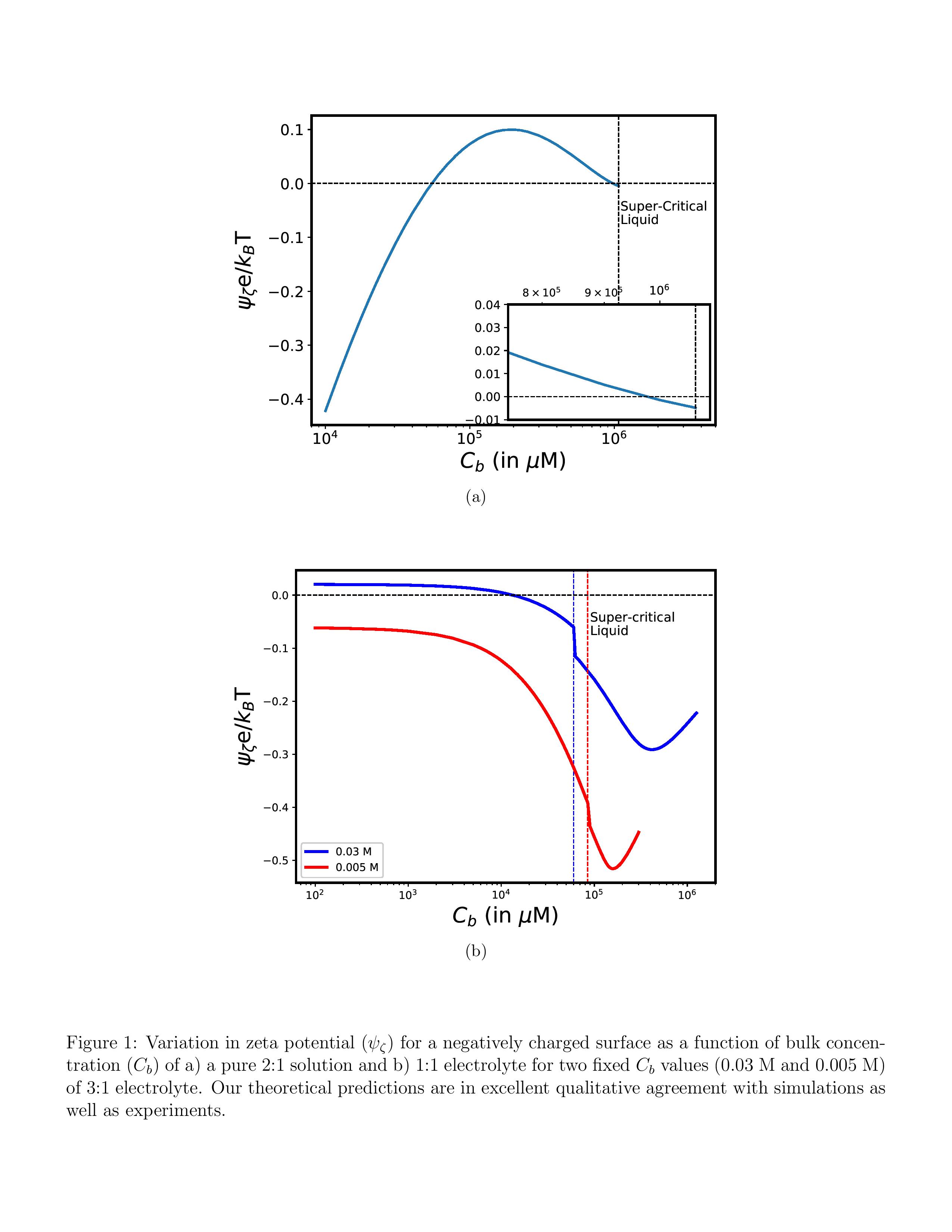2020 Virtual AIChE Annual Meeting
(474g) Correlation Induced Electrostatic Wetting and Charge Inversion
The study of Electrical Double Layer (EDL) near a charged interface lies at the heart of colloid and interfacial science. Although, mean-field Poisson Boltzmann (PB) theory has enjoyed significant successes in predicting the structure of EDL, there are many phenomena such as charge inversion and like-charge attraction for which PB cannot even provide a qualitative explanation, particularly in the presence of multivalent ions . Here we develop a Gaussian fluctuation theory which self-consistently includes ion-ion correlations (via ion self-energy) and excluded volume effect. Our theory can unify the description of the diffuse double layer (âgas-likeâ) and ion-condensed double layer (âliquid-likeâ) in a single framework and well capture the onset of the transition. We predict that a wetting transition driven by ion-ion correlation occurs beyond a critical surface charge density: a large number of counterions condense on the surface to form a liquid-like boundary layer. In the intermediate salt concentration regime, the wetting transition results in a charge inversion: the zeta potential or effective surface charge will change sign. At higher salt concentration, the charge inversion disappears where the effective charge will regain its original sign (Figure 1a in attached file) . These results are in good agreement with both molecular simulations and experimental observations. Furthermore, our theory shows that the charge inversion decays as a secondary monovalent salt is added to a solution containing multivalent electrolyte, which is also in accordance with experimental results (Figure 1b). The theory developed in this work provides a good platform to study a wealth of structure and dynamic behaviors of the charged systems, such as interaction between colloid particles, electroosmotic flow in nanochannels and double-layer capacitance.


